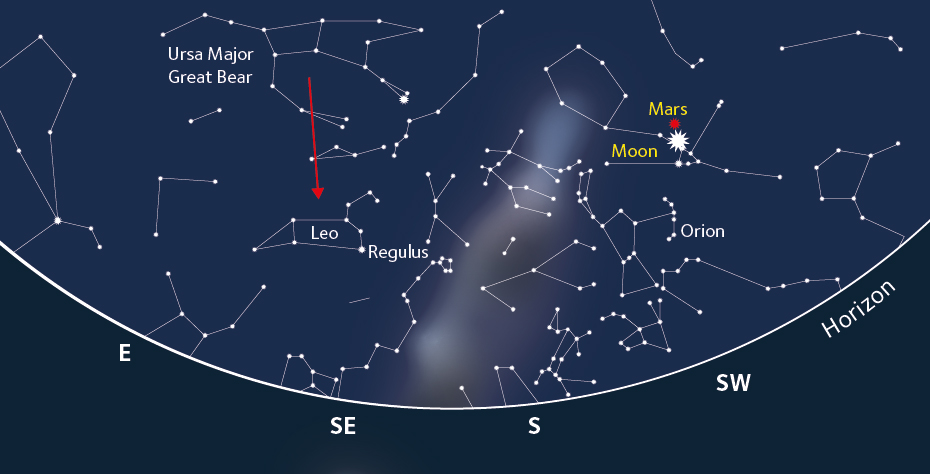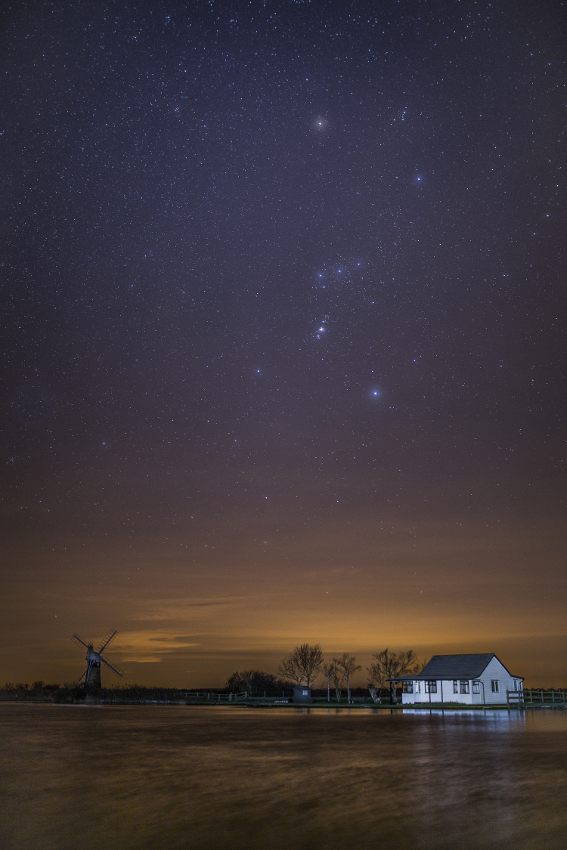

Night skies in the National Park have a beauty of their own thanks, in no small part, to their lack of light pollution.
With expert observations by astronomer John Craythorne (King’s Lynn and District Astronomy Society) we will be exploring the stars, constellations and planets to see throughout the seasons, starting with spring. So pick a clear night, grab your binoculars and reach for the stars.
“The Milky Way is our galaxy. It contains over 100 billion stars, some of which will have planets orbiting them. I wonder if there is an astronomer on one of them talking about the wonders of his night sky”, John Craythorne, FRAS.
The best time for stargazing is when there is no bright Moon at night, and when the Sun has set enough so that twilight does not affect observations. Check this online calendar to find out.
Great places for stargazing include: How Hill National Nature Reserve, St Benet’s Abbey and Horsey Mill. See our guide to Stargazing in the Broads or check out your local astronomical society.
Stargazing events at King's Lynn & District Astronomy Society, Norwich Astronomical Society, Breckland Astronomical Society and Lowestoft & Yarmouth Regional Astronomers.

The planet Mars shines brightly with a red colour some 30 degrees above the western horizon. It is now moving further from the Earth. The winter giant Orion is setting in the West and making way for one of the few constellations which resembles its name – Leo the lion. It is easy to find once you locate the Great Bear almost overhead follow the pointers down towards the south and you will find Leo. It’s brightest star Regulus is the 21st brightest star in the night sky and although it appears to be a single star it is actually a multiple star system.
A pair of binoculars will show one of the other stars in the system. Going back to the Great Bear (Latin name Ursa Major) most people can recognise the Plough and a careful view of it will show you the last but one star in the handle, Mizar, is clearly a double star. A pair of binoculars shows this very easily.

If you want to see craters on the moon then you need a pair of binoculars, 7x50’s will suffice. Some of the best views are around first quarter which happens around 21st March, 20th April and 19th May although the lighter evenings will make this less easy.
One of the most prominent craters on the Terminator (band between light and dark) is Archimedes, some 50 miles across with crater walls 6,500 ft high, to the south east of this are the Apennine mountains with Mount Hadley near its northern end the site of the Apollo 15 landing was in its shadow. There is a chance to see a thin crescent moon just below Mars on 19 March and again on 17 April in the West.

Dibs McCallum took the stunning picture used above of the night sky over Thurne Mill. And the good news is that he can also teach you to capture spectacular starry skies. Through The Lens Workshops are run throughout the year in Norfolk covering all kinds of photography including landscapes, wildlife and boating as well as astrophotography.
We can all do something to reduce light pollution in our area. Download a pledge sheet to see what you could do. Via the North Norfolk Coast AONB. #Norfolkdarkskiespledge
This is just a taste of the wonders of the night sky. The Broads National Park and North Norfolk coast have some of the darkest skies in England from which to enjoy its beauty.
Find out more about the next Dark Skies Festival from the Norfolk Coast Partnership.